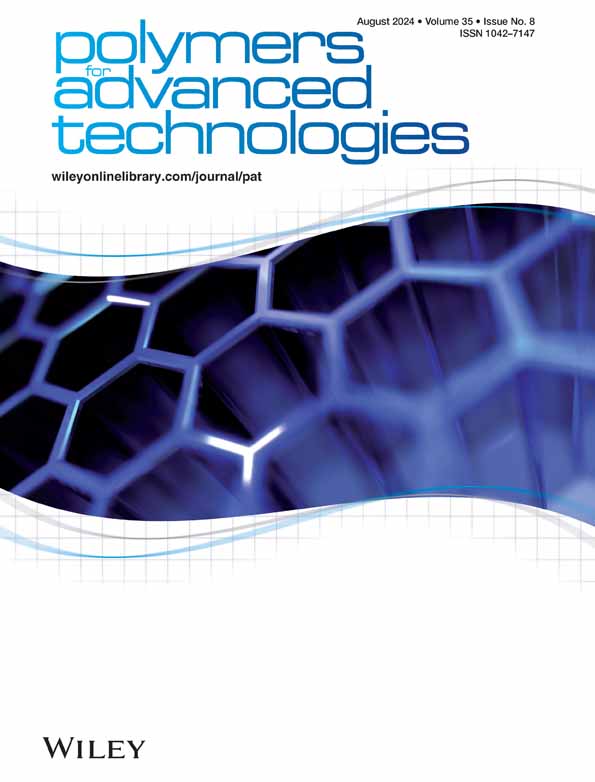含有钙交联的醋酸壳聚糖海绵的抗炎和促进愈合作用
IF 3.4
4区 工程技术
Q2 POLYMER SCIENCE
引用次数: 0
摘要
壳聚糖是一种用于组织伤口修复的潜在材料,但它具有溶解性差、凝胶强度低等局限性。醋酸壳聚糖(CA)是通过乙醇沉淀法合成的,而醋酸壳聚糖海绵(CA-Ca)则是以CaCO3为交联剂,采用冷冻干燥法制成的。CaCO3 的加入增强了 CA 所形成海绵的机械强度,但影响了海绵的吸水性能。CA 和 CA-Ca 都具有抗氧化性,其中 CA-Ca 对 DPPH 和羟基自由基的最大清除率略高于 CA。浓度为 1 至 500 μg/mL 的 CA 和 CA-Ca 对 L929 和 RAW264.7 细胞有增殖作用。此外,CA 和 CA-Ca 都能促进 L929 细胞的迁移,与对照组相比,CA-Ca 在 24 小时内显示出更高的最大愈合率。此外,两种材料都能降低 RAW264.7 炎症细胞中 TNF-α 和 IL-6 的水平,从而减轻炎症反应。此外,CA 和 CA-Ca 还能刺激成纤维细胞分泌胶原蛋白,但不会引起过度分泌。CA 海绵具有加速体外凝血的能力,而用 2% CA 制备的 CA-Ca-8(CA:CaCO3 1:8)海绵的凝血效果最好。总之,CA-Ca 具有吸水性、凝固性、细胞相容性、抗炎性和促进细胞愈合等合适的特性,为其潜在的临床应用奠定了基础。本文章由计算机程序翻译,如有差异,请以英文原文为准。
Anti‐inflammatory and pro‐healing effects of acetate chitosan sponge with calcium cross‐links
Chitosan, a potential material for tissue wound repair, exhibits limitations like poor solubility and low gel strength. Acetate chitosan (CA) was synthesized through ethanol precipitation, while acetate chitosan sponge (CA‐Ca) was created using the freeze‐drying method with CaCO3 as cross‐linking agents. The addition of CaCO3 enhanced the mechanical strength of the sponges formed by CA, but affected the water absorption performance of the sponge. Both CA and CA‐Ca demonstrated antioxidant properties, with CA‐Ca showing slightly higher maximal scavenging rates for DPPH and hydroxyl radicals compared to CA. Concentrations ranging from 1 to 500 μg/mL of CA and CA‐Ca exhibited a proliferative effect on L929 and RAW264.7 cells. Furthermore, both CA and CA‐Ca promoted the migration of L929 cells, with CA‐Ca showing a higher maximal healing rate within 24 h compared to the control group. Additionally, both materials reduced the levels of TNF‐αand IL‐6 in inflammatory RAW264.7 cells, thereby alleviating the inflammatory response. Moreover, CA and CA‐Ca stimulated collagen secretion in fibroblasts without inducing excessive secretion. CA sponge demonstrated the ability to accelerate in vitro coagulation, while CA‐Ca‐8 (CA:CaCO3 1:8) sponge, prepared with 2% CA, exhibited the most effective coagulation. Overall, CA‐Ca has suitable characteristics such as water absorption, coagulation, cytocompatibility, anti‐inflammatory properties, and promoting cell healing, laying the foundation for its potential clinical applications.
求助全文
通过发布文献求助,成功后即可免费获取论文全文。
去求助
来源期刊

Polymers for Advanced Technologies
工程技术-高分子科学
CiteScore
6.20
自引率
5.90%
发文量
337
审稿时长
2.1 months
期刊介绍:
Polymers for Advanced Technologies is published in response to recent significant changes in the patterns of materials research and development. Worldwide attention has been focused on the critical importance of materials in the creation of new devices and systems. It is now recognized that materials are often the limiting factor in bringing a new technical concept to fruition and that polymers are often the materials of choice in these demanding applications. A significant portion of the polymer research ongoing in the world is directly or indirectly related to the solution of complex, interdisciplinary problems whose successful resolution is necessary for achievement of broad system objectives.
Polymers for Advanced Technologies is focused to the interest of scientists and engineers from academia and industry who are participating in these new areas of polymer research and development. It is the intent of this journal to impact the polymer related advanced technologies to meet the challenge of the twenty-first century.
Polymers for Advanced Technologies aims at encouraging innovation, invention, imagination and creativity by providing a broad interdisciplinary platform for the presentation of new research and development concepts, theories and results which reflect the changing image and pace of modern polymer science and technology.
Polymers for Advanced Technologies aims at becoming the central organ of the new multi-disciplinary polymer oriented materials science of the highest scientific standards. It will publish original research papers on finished studies; communications limited to five typewritten pages plus three illustrations, containing experimental details; review articles of up to 40 pages; letters to the editor and book reviews. Review articles will normally be published by invitation. The Editor-in-Chief welcomes suggestions for reviews.
 求助内容:
求助内容: 应助结果提醒方式:
应助结果提醒方式:


